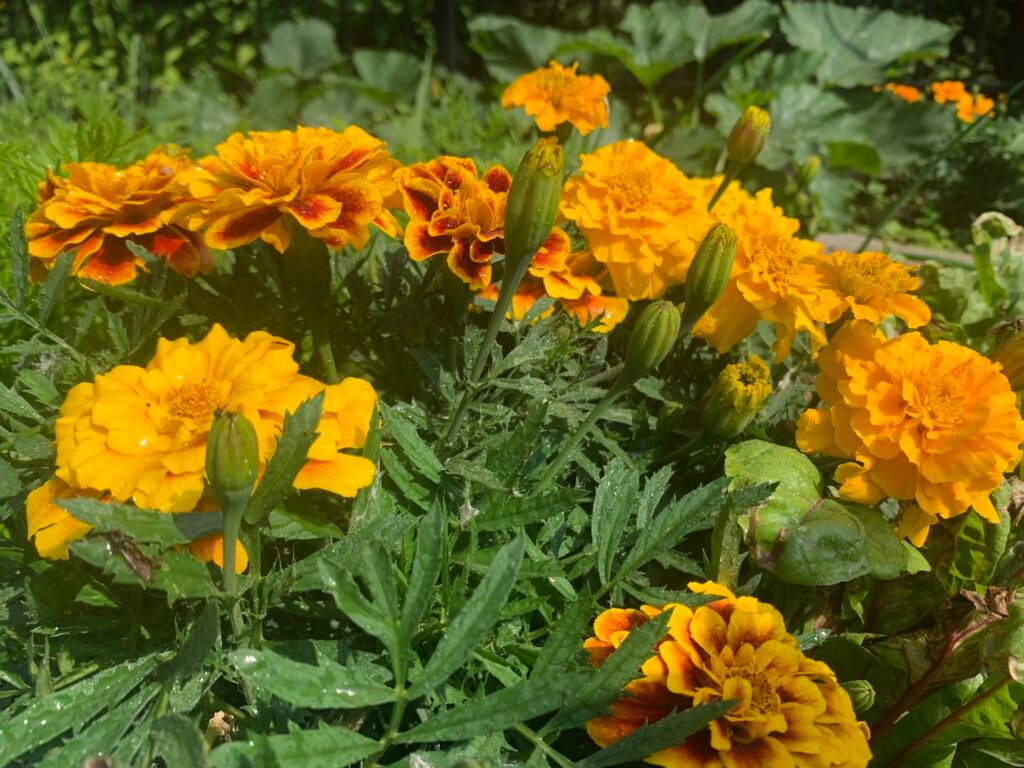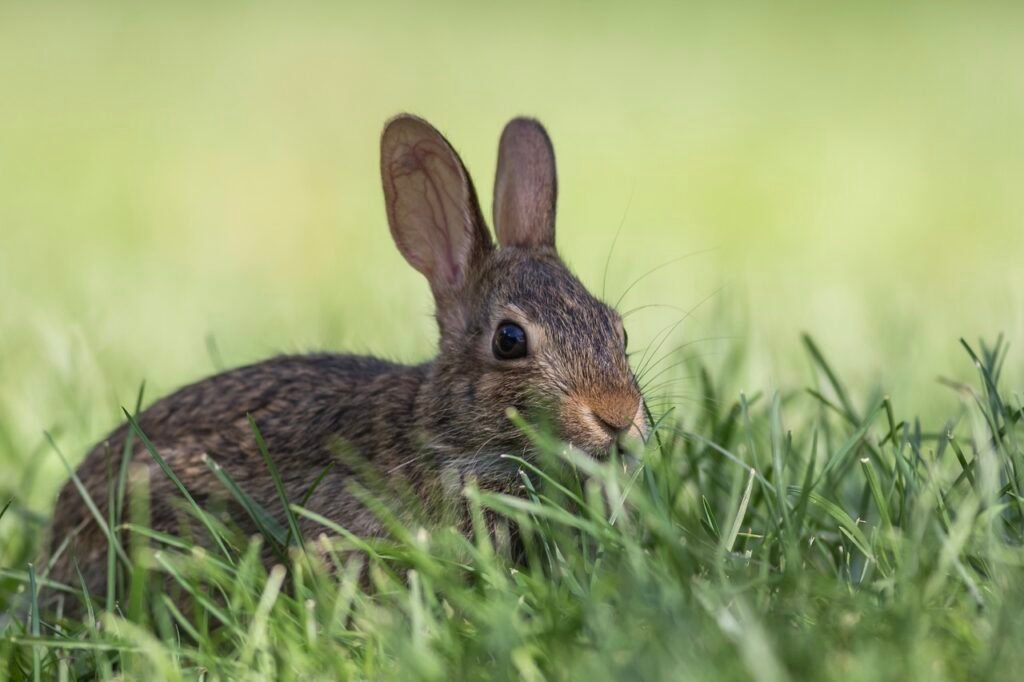Gardening is a rewarding hobby, but it can be incredibly frustrating when rabbits target your vegetable plants. These cute but voracious creatures can decimate your hard work in a matter of days. Understanding how to protect your garden from rabbits is essential for any gardener looking to enjoy a bountiful harvest. This comprehensive guide will explore various strategies to deter rabbits, ensuring your vegetables remain safe and your garden thrives.
Some of the links on this website may be affiliate links. If you purchase a product or service through these links, I may earn a small commission at no extra cost to you. I only recommend products or services that I have personally used and believe will add value to my readers. Thank you for your support!
Understanding the Rabbit Problem
To effectively protect your garden, it’s crucial to understand the nature of the rabbit problem. There are several rabbit species commonly found in gardens, such as the Eastern Cottontail. These rabbits are herbivores, preferring tender greens and young plants, making your vegetable garden an ideal target.
Signs of rabbit activity include neatly clipped plants, pea-sized droppings, and shallow burrows. Recognizing these signs early can help you implement protective measures before significant damage occurs.
Physical Barriers
Fencing
A sturdy fence is a primary defense against rabbits. Use materials like chicken wire or hardware cloth, ensuring the fence is at least two feet high and buried at least six inches underground to prevent burrowing. Proper installation is key—ensure there are no gaps larger than one inch and regularly check for wear and tear.
Netting and Covers
Garden netting and row covers are excellent for protecting individual plants or sections of your garden. Secure these covers tightly to the ground to prevent rabbits from sneaking underneath. Lightweight and easy to install, these barriers can be moved and adjusted as needed throughout the growing season. Product link on Amazon: Row Cover

Repellents
Repellents can be a useful addition to physical barriers, providing an extra layer of protection.
Natural Repellents
Homemade sprays using ingredients like garlic, hot peppers, or rotten eggs can deter rabbits due to their strong odors. For example, a mixture of crushed garlic, water, and a few drops of dish soap can be sprayed on plants. Additionally, planting certain herbs and flowers, such as marigolds and lavender, around your garden can naturally repel rabbits
Commercial Repellents
There are various commercial rabbit repellents available in the form of sprays, granules, or liquids. These products typically use scents and tastes that rabbits find unpleasant. Apply these repellents according to the manufacturer’s instructions, and reapply after rain or watering.
Habitat Modification
Removing Attractants
Keep your garden and its surroundings tidy by eliminating weeds, clover, and other plants that rabbits find attractive. Mow tall grass and remove brush piles to reduce hiding spots.
Creating a Less Inviting Environment
Use mulch and gravel around your plants, as rabbits dislike moving through these materials. Planting rabbit-resistant plants such as onions, garlic, and aromatic herbs can also help deter them.

Deterrent Devices
Modern technology offers several deterrent devices that can help keep rabbits at bay.
Motion-Activated Sprinklers
These devices use motion sensors to detect rabbits and spray water to scare them away without any harm being done. Place them strategically around your garden for maximum coverage. While effective, they can be costly and require regular maintenance. Product link on Amazon: Motion-Activated Sprinklers
Ultrasonic Devices
Ultrasonic repellents emit high-frequency sounds that are unpleasant to rabbits but inaudible to humans. Place these devices around your garden perimeter. However, their effectiveness can vary, and some rabbits may become accustomed to the noise over time. Product link on Amazon: Ultrasonic Repellents
Chemical Controls
Chemical controls should be used as a last resort due to potential safety and environmental concerns.
Overview of Chemical Options
There are various chemical repellents and pesticides designed to deter rabbits. It’s essential to choose products that are safe for your plants, pets, and the environment.
Application Methods
Apply chemical repellents according to the label instructions, typically around the garden perimeter or directly on the plants. Always wear protective gear when handling chemicals, and follow safety precautions to avoid contamination.
Companion Planting and Garden Design
Strategic planting and garden design can help protect your vegetables.
Companion Planting Techniques
Certain plants, when grown alongside your vegetables, can repel rabbits. For example, planting marigolds, peppermint, onions, garlic, and chives near your vegetables can deter rabbits due to their strong scents.
Using Decoy Plants
Planting sacrificial crops, like clover or certain types of lettuce, can lure rabbits away from your main garden. Position these decoy plants on the garden’s periphery to keep rabbits occupied.

Encouraging Natural Predators
Promoting the presence of natural predators can help control the rabbit population.
Benefits of Natural Predators
Birds of prey, foxes, and snakes are natural rabbit predators. Encouraging these animals to visit your garden can reduce rabbit numbers.
Creating a Predator-Friendly Environment
Install perches for hawks and owls, or create habitats for foxes and other predators. However, ensure a balance, as you don’t want these predators to pose a threat to pets or other desirable wildlife.
Humane Trapping and Relocation
If other methods fail, humane trapping and relocation may be necessary.
Trapping Methods
Use live traps designed for rabbits, baited with carrots or apples. Place traps in areas with high rabbit activity and check them regularly.
Relocation Guidelines
Before relocating trapped rabbits, check local regulations, as relocating wildlife can be illegal in some areas. Release rabbits in a suitable habitat at least five miles away from your garden.
Protecting your vegetable plants from rabbits requires a multi-faceted approach. By combining physical barriers, repellents, habitat modification, deterrent devices, and strategic planting, you can create an effective defense against these persistent pests. Encourage natural predators and consider humane trapping if necessary. With these strategies, you can enjoy a thriving, rabbit-free garden.
Additional Resources
Books:
- “The Vegetable Gardener’s Guide to Permaculture” by Christopher Shein – A comprehensive guide to creating sustainable gardens, including tips on pest management.
- “The Organic Gardener’s Handbook of Natural Pest and Disease Control” edited by Fern Marshall Bradley – A valuable resource for organic pest control methods.
Websites:
- University of California Agriculture and Natural Resources – Provides extensive information on rabbit control and other gardening issues.
- National Wildlife Federation – Information on encouraging natural predators and wildlife management in your garden.
References
- Shein, Christopher. The Vegetable Gardener’s Guide to Permaculture. Timber Press, 2013.
- Hart, Rhonda Massingham. Deerproofing Your Yard & Garden. Storey Publishing, 2005.
- Bradley, Fern Marshall, editor. The Organic Gardener’s Handbook of Natural Pest and Disease Control. Rodale Books, 2009.
- “Rabbit Control in Gardens and Landscapes.” University of Missouri Extension, University of Missouri, extension.missouri.edu.
- “How to Keep Rabbits Out of Your Garden.” The Old Farmer’s Almanac, Yankee Publishing, www.almanac.com.
- “Rabbit Control and Management.” University of California Agriculture and Natural Resources, UCANR, ucanr.edu.
- “Keeping Rabbits Out of Your Garden.” Gardening Know How, www.gardeningknowhow.com.
- “Wildlife Management.” National Wildlife Federation, National Wildlife Federation, www.nwf.org.

